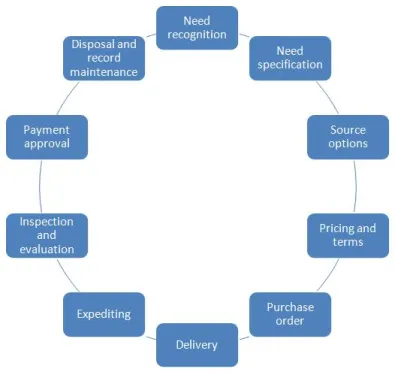Top Challenges in the Purchasing Process and How to Overcome Them
- donnariekepro
- Aug 28, 2024
- 3 min read
The purchasing process is a critical component of any business, directly impacting operational efficiency, cost management, and overall profitability. However, this process is not without its challenges. Companies often encounter obstacles that can lead to delays, increased costs, and compromised supplier relationships. In this blog, we’ll explore the top challenges in the purchasing process and provide strategies to overcome them, helping you streamline operations and achieve better results.
1. Inaccurate Demand Forecasting
One of the most significant challenges in the purchasing process is inaccurate demand forecasting. When demand is misjudged, it can lead to overstocking or stockouts, both of which have serious financial implications. Overstocking ties up capital and increases storage costs, while stockouts can result in lost sales and dissatisfied customers.
How to Overcome It:
Implement Advanced Analytics: Utilize data analytics and demand forecasting tools that consider historical data, market trends, and seasonality. This will help you make more accurate predictions.
Collaborate with Sales and Marketing: Ensure that your purchasing team works closely with sales and marketing departments to align forecasts with upcoming campaigns and promotions.
2. Supplier Reliability Issues
Supplier reliability is another common challenge. Delays in delivery, inconsistent product quality, and communication gaps can disrupt your supply chain and affect your ability to meet customer demands.
How to Overcome It:
Diversify Your Supplier Base: Relying on a single supplier can be risky. Diversify your supplier base to reduce dependency on any one source and ensure continuity in case of issues.
Establish Strong Relationships: Build strong relationships with your suppliers by maintaining open communication, setting clear expectations, and negotiating favorable terms.
3. Cost Management
Controlling costs throughout the purchasing process is a challenge that every business faces. Fluctuating prices, hidden fees, and poor negotiation can lead to higher-than-expected expenses, affecting your bottom line.
How to Overcome It:
Leverage Bulk Purchasing: Whenever possible, negotiate bulk purchase agreements to benefit from volume discounts.
Use Spend Analysis Tools: Implement spend analysis tools to monitor expenses and identify areas where you can cut costs without compromising quality.
4. Compliance and Regulatory Challenges
Navigating the complex web of regulations and compliance requirements can be daunting. Failure to adhere to these regulations can lead to fines, legal issues, and damage to your reputation.
How to Overcome It:
Stay Informed: Keep up to date with relevant regulations and industry standards that impact your purchasing process. Regularly review and update your policies to ensure compliance.
Invest in Compliance Software: Use compliance management software to track and document adherence to regulations, reducing the risk of non-compliance.
5. Inefficient Purchasing Processes
Inefficient purchasing processes can result in delays, errors, and increased costs. Manual processes, lack of automation, and poor communication within teams often lead to these inefficiencies.
How to Overcome It:
Automate Routine Tasks: Invest in procurement software to automate repetitive tasks such as order processing, invoicing, and approvals. This will not only speed up the process but also reduce the risk of errors.
Standardize Processes: Create standardized procedures for purchasing activities to ensure consistency and improve efficiency. Training your team on these procedures is also essential.
6. Lack of Supplier Performance Monitoring
Without proper monitoring, you may continue working with underperforming suppliers, leading to quality issues and delays. Regularly assessing supplier performance is crucial to maintaining a smooth purchasing process.
How to Overcome It:
Implement a Supplier Performance Management System: Use a system that tracks key performance indicators (KPIs) such as on-time delivery, product quality, and responsiveness.
Conduct Regular Reviews: Schedule periodic reviews with your suppliers to discuss their performance, address issues, and explore areas for improvement.
Conclusion
The purchasing process is fraught with challenges, but with the right strategies in place, you can overcome them and ensure a smooth, efficient operation. By focusing on accurate demand forecasting, building strong supplier relationships, managing costs effectively, ensuring compliance, automating processes, and monitoring supplier performance, your business can turn these challenges into opportunities for growth and success. SITES WE SUPPORT
SOCIAL LINKS




Comments